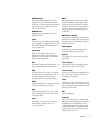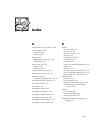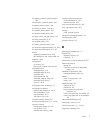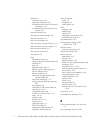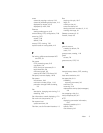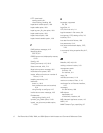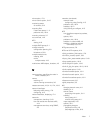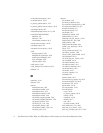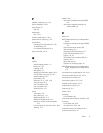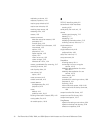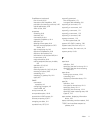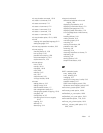
Index 11
SnapRestore
(continued)
how it works, 3-22
interaction with SnapMirror, 3-23
procedure for reverting a volume, 3-25
typical applications, 3-22
when to use, 3-23
snapshots
accessing, 9-16
automatic, 9-5
commands for, 9-4
created by SnapMirror, 16-4
definition, 9-1
deleting to free space, 9-14
directory name displayed on CIFS
clients, 9-17
disk consumption by, 9-8
effects of SnapRestore, 3-22
effects on disk quotas, 9-11
information in the custom MIB, 4-4
ls command, 9-18
magic directories, 9-16
making snapshot directory invisible,
9-4
operation of, 9-2, 9-3
options, 19-13
reserving space for, 9-9, 9-12, 9-14
reverting a volume, 3-25
scheduling, 9-11
snapshot_for_backup file, 12-2
types, 9-5
SNMP
commands
examples, 4-2
configuring the agent, 4-2
custom MIB, 4-3
snmp command, 4-2
snmp.enable option, 19-19
spare disks in RAID groups, 3-1
subnets, exporting to, 6-11
swapping out disks, 3-11
symbolic links, CIFS, 5-2
sysconfig command
filer configuration, 17-1
hot spare disk availability, 3-6
sysconfig -d command, 17-1
sysconfig -m command, 14-2
sysconfig -r command, 17-1
sysconfig -t command, 17-2
sysconfig -v command, 18-1
sysstat command, 17-3
for filer system load, 3-6
system ACL (SACL), setting, 7-30
System board, filer main unit, 1-4
system memory, filer main unit, 1-4
system panics, 18-19
7
tape block
definition, 12-6
specifying the size for dump, 12-14
specifying the size when restoring
files, 13-3
tape drives
backing up to remote, 12-10
controlling, 14-4
displaying information about, 17-2
tape file
definition, 12-6
size used by remote host, 12-10
specifying name, 12-14
specifying size for dump, 12-14
specifying when restoring data, 13-3
types of, 12-7
tape stackers, displaying information
about, 14-2
tapes, estimating number needed, 12-8
TCP/IP, how interfaces respond to
packets, 4-14



